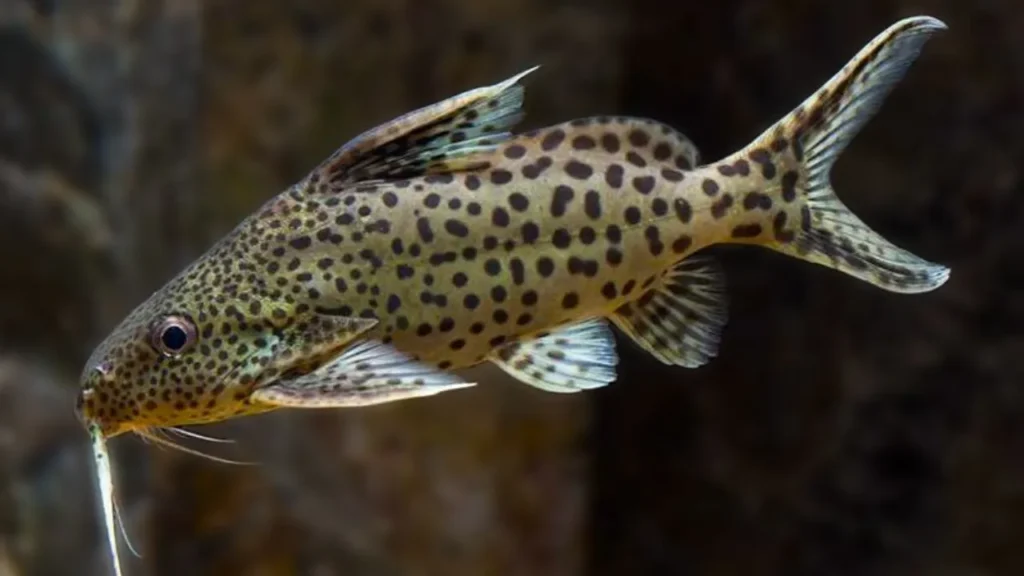The Malawi squeaker catfish, scientifically known as Synodontis njassae, is a fascinating freshwater species native to Lake Malawi in East Africa. Renowned for its unique squeaking sound and striking appearance, this catfish is a popular choice among aquarists. However, providing proper care is essential for keeping these fish healthy and thriving in a home aquarium. This care guide for Malawi squeaker catfish will cover all aspects, from habitat requirements to diet and health management.
Introduction to Malawi Squeaker Catfish

The Malawi squeaker catfish is a member of the Synodontis genus, which is known for its diversity and adaptability. This species is relatively peaceful, making it suitable for community tanks. However, their care requires specific attention to water quality, tank setup, and dietary needs. Let’s explore how to provide the best environment for these remarkable fish.
Appearance and Behavior
Physical Characteristics
The Malawi squeaker catfish is known for its:
- Brownish body with dark spots, providing excellent camouflage.
- Flat belly and a slightly rounded dorsal fin.
- Large, sensitive barbels, used for navigation and foraging.
Behavioral Traits
- Nocturnal and active during the evening.
- Prefers hiding during the day in caves or under rocks.
- Emits a squeaking sound when distressed or excited, hence the name.
Habitat Requirements
Tank Size
- Minimum 30 gallons for a single catfish; larger tanks are recommended for groups.
- Tank dimensions should prioritize horizontal space over height.
Water Parameters
| Parameter | Ideal Range |
|---|---|
| Temperature | 74°F to 82°F (23°C to 28°C) |
| pH Level | 7.5 to 8.5 |
| Hardness | 10 to 15 dGH |
Substrate and Decorations
- Use fine sand or smooth gravel to prevent damage to their barbels.
- Add caves, rocks, and driftwood for hiding spots.
Filtration and Aeration
- Strong filtration is necessary to maintain clean water, as they are sensitive to ammonia and nitrites.
- Ensure adequate aeration to mimic oxygen-rich environments.
Diet and Nutrition
Malawi squeaker catfish are omnivorous, requiring a balanced diet. They are bottom feeders, so sinking foods are ideal.
Dietary Options
- Protein-rich foods: Bloodworms, brine shrimp, and daphnia.
- Vegetable matter: Blanched zucchini, cucumber, and spirulina pellets.
- Commercial pellets: Choose high-quality sinking pellets formulated for catfish.
Feeding Schedule
- Feed once or twice daily.
- Provide food after lights out to align with their nocturnal habits
Tank Mates for Malawi Squeaker Catfish
Compatible Species
- Peaceful cichlids like peacocks and mbunas.
- Other bottom-dwelling species like plecos and loaches.
- Mid-level swimmers like rainbowfish.
Species to Avoid
- Aggressive or overly territorial fish.
- Tiny fish that might be mistaken for food.
Health Management
Common Diseases
- Ich (White Spot Disease): Treat with temperature adjustments and medication.
- Barbel Erosion: Caused by poor substrate; ensure smooth gravel or sand.
- Fungal Infections: Maintain water cleanliness to prevent outbreaks.
Preventive Measures
- Perform weekly water changes (20–30%).
- Test water parameters regularly.
- Quarantine new fish before introducing them to the tank.
Breeding Malawi Squeaker Catfish
Breeding Malawi squeaker catfish in captivity is challenging but possible with the right conditions.
Key Steps for Breeding
- Set up a separate breeding tank with a slightly higher temperature (around 82°F).
- Provide flat surfaces like rocks for egg deposition.
- Condition the breeding pair with a protein-rich diet.
- After spawning, remove the adults to prevent them from eating the eggs.
Caring for Fry
- Feed fry with infusoria or powdered fish food.
- Gradually introduce larger foods like brine shrimp as they grow.
Quick Care Summary for Malawi Squeaker Catfish
| Aspect | Requirements |
|---|---|
| Tank Size | Minimum 30 gallons |
| Temperature | 74°F to 82°F |
| pH Level | 7.5 to 8.5 |
| Diet | Omnivorous (sinking pellets, live food) |
| Tank Mates | Peaceful cichlids, plecos, rainbowfish |
| Maintenance | Weekly water changes, strong filtration |
| Breeding Difficulty | Moderate to High |
FAQs
1. How big do Malawi squeaker catfish grow?
They typically grow to around 6 to 8 inches in captivity, depending on diet and tank conditions.
2. Can I keep more than one Malawi squeaker catfish in a tank?
Yes, they can be kept in groups if the tank is large enough. Ensure plenty of hiding spots to minimize territorial disputes.
3. How long do Malawi squeaker catfish live?
With proper care, they can live up to 10 years or more.
Conclusion
The Malawi squeaker catfish is a captivating addition to any aquarium, offering a blend of beauty, unique behavior, and a touch of the exotic. Proper care, including the right habitat, diet, and tank mates, ensures these fish remain healthy and active. By following this comprehensive care guide for Malawi squeaker catfish, you can create a thriving environment that mirrors their natural habitat and enjoy their company for years to come. Whether you’re an experienced aquarist or a passionate enthusiast, these intriguing catfish are sure to bring life and vibrancy to your tank.
